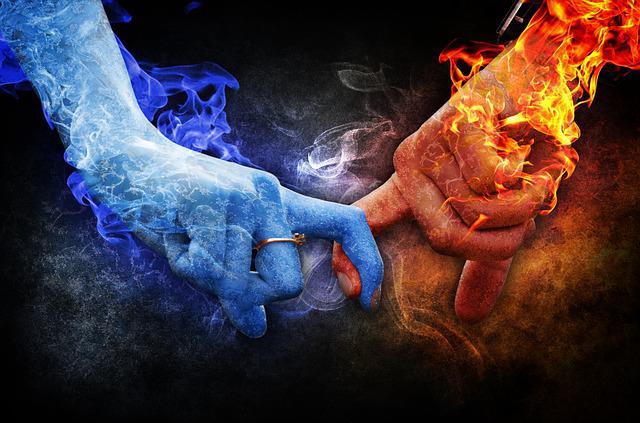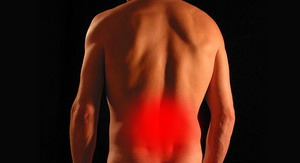 A couple of weeks ago I noticed a bit of tenderness in my left low back. Initially, I ignored it, but it didn’t go away. I had not done anything that would cause an issue in that region, yet it was a bit uncomfortable. Finally, I checked the low back with muscle testing, much like I do with all my patients, and found a couple of spots not moving properly. I found the right direction to adjust it to bring everything back to balance and adjusted myself with my Activator. It felt immediately better, so I figured something had unbalanced the muscles in the area and now it would be fine.
A couple of weeks ago I noticed a bit of tenderness in my left low back. Initially, I ignored it, but it didn’t go away. I had not done anything that would cause an issue in that region, yet it was a bit uncomfortable. Finally, I checked the low back with muscle testing, much like I do with all my patients, and found a couple of spots not moving properly. I found the right direction to adjust it to bring everything back to balance and adjusted myself with my Activator. It felt immediately better, so I figured something had unbalanced the muscles in the area and now it would be fine.
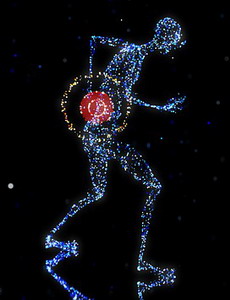 When I awoke the next morning the discomfort was back. I could still walk and I could get up and down, but certain movements were simply a bit painful. I got more serious with it and went full test mode on it and checked out my kidneys and the valves in my colon as these are common causes of low back pain. Nothing showed up. I checked all the different muscles that attach around that area and adjusted a couple of them that were too tight. I checked the low back joints and bones and made the indicated adjustments. Again things felt somewhat better but not completely. I headed off to work where I used the electronic Activator on the back, as the multiple tapping sometimes does a better job on muscles that are spasming. This worked pretty well for most of the day, but by the end of the day, things were pretty sore.
When I awoke the next morning the discomfort was back. I could still walk and I could get up and down, but certain movements were simply a bit painful. I got more serious with it and went full test mode on it and checked out my kidneys and the valves in my colon as these are common causes of low back pain. Nothing showed up. I checked all the different muscles that attach around that area and adjusted a couple of them that were too tight. I checked the low back joints and bones and made the indicated adjustments. Again things felt somewhat better but not completely. I headed off to work where I used the electronic Activator on the back, as the multiple tapping sometimes does a better job on muscles that are spasming. This worked pretty well for most of the day, but by the end of the day, things were pretty sore.
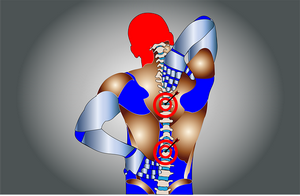 I headed home wondering what else I could do with this back pain. Once home I tested various ranges of motion to see if all the muscles in the area were working in balance. I developed this technique many years ago along with a Biomagnetic tool with which I am able to reset any imbalances I find. I do this sometimes with difficult back problems with some patients. As I was doing this I noticed a particular pattern to the pain. The pain occurred whenever I tilted to the left and not the right. Usually, the pain intensifies when you move away from the side of the pain, as that movement stretches the painful spasming muscles on that side. Moving toward the side of pain relaxes the muscles and should relieve muscle pain. That is not what I had going on. Pain increasing on the side you tilt into indicates that the problem is actually a swollen joint capsule. The tight muscles I was feeling were not actually painfully spasming, but rather simply protecting the swollen joints on the left side.
I headed home wondering what else I could do with this back pain. Once home I tested various ranges of motion to see if all the muscles in the area were working in balance. I developed this technique many years ago along with a Biomagnetic tool with which I am able to reset any imbalances I find. I do this sometimes with difficult back problems with some patients. As I was doing this I noticed a particular pattern to the pain. The pain occurred whenever I tilted to the left and not the right. Usually, the pain intensifies when you move away from the side of the pain, as that movement stretches the painful spasming muscles on that side. Moving toward the side of pain relaxes the muscles and should relieve muscle pain. That is not what I had going on. Pain increasing on the side you tilt into indicates that the problem is actually a swollen joint capsule. The tight muscles I was feeling were not actually painfully spasming, but rather simply protecting the swollen joints on the left side.
 This is the point where you slap the front of your forehead and say, “golly gosh, this is not what I thought it was,” and you change your plan of action. Swollen joints need cold (cryotherapy). Cold helps to reduce the swelling in the joints to relieve the pain. I carefully made my way over to the fridge and pulled a cold pack out of the bottom compartment. It was time for Ellen and me to do our daily 45 minutes of television, so this was the perfect opportunity to apply a cold pack to my low back. Forty-five minutes later my low back felt much better. By the next morning, it felt fine. That is not to say that I trusted it to actually be fine. I was careful with my movements to deeply bend my knees whenever I had to get something up from floor level. This is basic safety for lifting anything involving the back – you know that lift with the knees and not the back advice we have all heard a thousand times and routinely ignore. Recent pain helps me remember.
This is the point where you slap the front of your forehead and say, “golly gosh, this is not what I thought it was,” and you change your plan of action. Swollen joints need cold (cryotherapy). Cold helps to reduce the swelling in the joints to relieve the pain. I carefully made my way over to the fridge and pulled a cold pack out of the bottom compartment. It was time for Ellen and me to do our daily 45 minutes of television, so this was the perfect opportunity to apply a cold pack to my low back. Forty-five minutes later my low back felt much better. By the next morning, it felt fine. That is not to say that I trusted it to actually be fine. I was careful with my movements to deeply bend my knees whenever I had to get something up from floor level. This is basic safety for lifting anything involving the back – you know that lift with the knees and not the back advice we have all heard a thousand times and routinely ignore. Recent pain helps me remember.
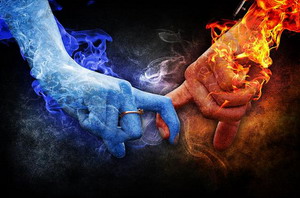 The point of this story is to highlight an argument that has been going on for over 100 years in the world of physical therapy and sports medicine – which is better, heat or cold? Both sides of the argument have good reasons for believing their side. Heat brings in more blood by opening up the blood vessels, which increases oxygen, brings nutrition, and helps release muscle spasms. Cold does the opposite. The idea with cold is that the area involved is already too swollen with excess fluid and needs to reduce the fluid flow to the area, so the swelling can come down. Cold contracts the tissues while heat expands them.
The point of this story is to highlight an argument that has been going on for over 100 years in the world of physical therapy and sports medicine – which is better, heat or cold? Both sides of the argument have good reasons for believing their side. Heat brings in more blood by opening up the blood vessels, which increases oxygen, brings nutrition, and helps release muscle spasms. Cold does the opposite. The idea with cold is that the area involved is already too swollen with excess fluid and needs to reduce the fluid flow to the area, so the swelling can come down. Cold contracts the tissues while heat expands them.
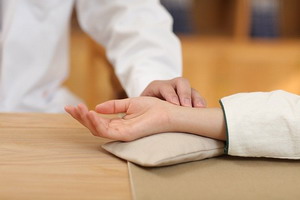 In Chinese medicine, considerable attention is put on determining if a given condition has too much or too little heat or cold as well as too much dryness or dampness. I see this as a better approach to the old argument. Both sides of the argument are right in certain circumstances and wrong in other circumstances. But determining what circumstances are what requires thinking like a doctor making a diagnosis. The guys arguing just want one simple answer that will fit every situation – no thinking involved. But as this newsletter frequently points out, real life is complex and very situation specific. Simple answers rarely work out well.
In Chinese medicine, considerable attention is put on determining if a given condition has too much or too little heat or cold as well as too much dryness or dampness. I see this as a better approach to the old argument. Both sides of the argument are right in certain circumstances and wrong in other circumstances. But determining what circumstances are what requires thinking like a doctor making a diagnosis. The guys arguing just want one simple answer that will fit every situation – no thinking involved. But as this newsletter frequently points out, real life is complex and very situation specific. Simple answers rarely work out well.
 So which is better – heat or cold? The answer is it depends on what you are treating. In my personal story, I assumed that I had a muscular problem because I had done nothing that should have swollen a joint capsule. It wasn’t until I noticed that my story did not match what my body was telling me that I got a clue. Often our assumptions keep us from noticing or even performing the tests that will show us that our assumptions are wrong. This is a huge problem in society called confirmation bias. We only pay attention to information that tells us we are right. We ignore evidence that tells us we are wrong. We all like to feel that we are right and know what is going on, and it is usually pain of some sort that finally challenges our assumptions.
So which is better – heat or cold? The answer is it depends on what you are treating. In my personal story, I assumed that I had a muscular problem because I had done nothing that should have swollen a joint capsule. It wasn’t until I noticed that my story did not match what my body was telling me that I got a clue. Often our assumptions keep us from noticing or even performing the tests that will show us that our assumptions are wrong. This is a huge problem in society called confirmation bias. We only pay attention to information that tells us we are right. We ignore evidence that tells us we are wrong. We all like to feel that we are right and know what is going on, and it is usually pain of some sort that finally challenges our assumptions.
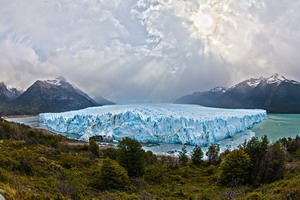 What I tell patients in my office when they ask if they should ice their back is NO – NEVER ICE YOUR BACK (unless you are trying to stop bleeding). Why do I say that? Ice will severely restrict blood flow and cause a contraction in the muscles around the spine. This will increase your pain once the numbing from the ice wears off in about 20 minutes. Because your spine has seven layers of muscles and about a zillion joints and you don’t know exactly which are the cause of your pain, use 15 minutes of heat followed by 15 minutes of refrigerator cold (not ice). This will address both tissue types nicely and produce the best overall result 90% of the time. Sometimes the patient’s issue is entirely a muscle strain and heat alone works the best. Muscles like heat for the reasons described above. The spine rarely likes cold all by itself. Ice acts as a skin irritant that blocks deep joint pain for a few minutes but does not actually make anything better. This is the same principle that sports rubs and products like Bio-freeze work with to reduce pain. Acupuncturists will burn the skin with moxa to achieve this same result.
What I tell patients in my office when they ask if they should ice their back is NO – NEVER ICE YOUR BACK (unless you are trying to stop bleeding). Why do I say that? Ice will severely restrict blood flow and cause a contraction in the muscles around the spine. This will increase your pain once the numbing from the ice wears off in about 20 minutes. Because your spine has seven layers of muscles and about a zillion joints and you don’t know exactly which are the cause of your pain, use 15 minutes of heat followed by 15 minutes of refrigerator cold (not ice). This will address both tissue types nicely and produce the best overall result 90% of the time. Sometimes the patient’s issue is entirely a muscle strain and heat alone works the best. Muscles like heat for the reasons described above. The spine rarely likes cold all by itself. Ice acts as a skin irritant that blocks deep joint pain for a few minutes but does not actually make anything better. This is the same principle that sports rubs and products like Bio-freeze work with to reduce pain. Acupuncturists will burn the skin with moxa to achieve this same result.
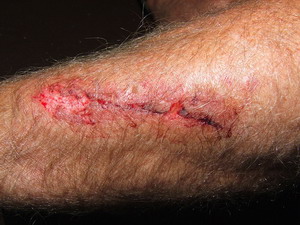 So when do you use ice? As mentioned before, when you want to stop bleeding, ice is where you go. You can use ice over bony surfaces where there is no muscle – like elbows, wrists, knees, and ankles. If you have had a direct trauma like a contusion and you want to stop the swelling then ice does a nice job with that. An example might be a blow to the head or anywhere else from a hard object. Where do you use heat by itself? As I said before, muscles like heat. If you are treating a muscle belly for a muscle strain then heat is a great option. Heat will bring in the nutrition and oxygen to support the repair of the injured tissues without causing compressive swelling. What do I mean by compressive swelling? Certain tissues have a tough fibrous wrapping that does not stretch, like joint capsules. As fluid infiltrates these areas, the internal pressure increases causing pain. The connective tissue around muscles is the stretchable kind, so swelling does not do this.
So when do you use ice? As mentioned before, when you want to stop bleeding, ice is where you go. You can use ice over bony surfaces where there is no muscle – like elbows, wrists, knees, and ankles. If you have had a direct trauma like a contusion and you want to stop the swelling then ice does a nice job with that. An example might be a blow to the head or anywhere else from a hard object. Where do you use heat by itself? As I said before, muscles like heat. If you are treating a muscle belly for a muscle strain then heat is a great option. Heat will bring in the nutrition and oxygen to support the repair of the injured tissues without causing compressive swelling. What do I mean by compressive swelling? Certain tissues have a tough fibrous wrapping that does not stretch, like joint capsules. As fluid infiltrates these areas, the internal pressure increases causing pain. The connective tissue around muscles is the stretchable kind, so swelling does not do this.
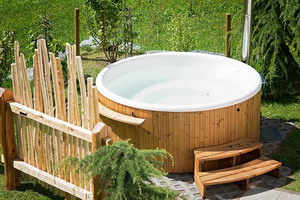 This gives you a much better answer to the old question of which is better, heat or cold. But if you are still not sure what to do, then try one and then the other and see which one works out better for you. I know the old try it and see is kind of simple, but this is what real science is based on – try it and see what happens. Modern science seems to frequently have forgotten the first two steps of the scientific method – observe and experiment. We can do that with ourselves.
This gives you a much better answer to the old question of which is better, heat or cold. But if you are still not sure what to do, then try one and then the other and see which one works out better for you. I know the old try it and see is kind of simple, but this is what real science is based on – try it and see what happens. Modern science seems to frequently have forgotten the first two steps of the scientific method – observe and experiment. We can do that with ourselves.
Enjoy,
David
